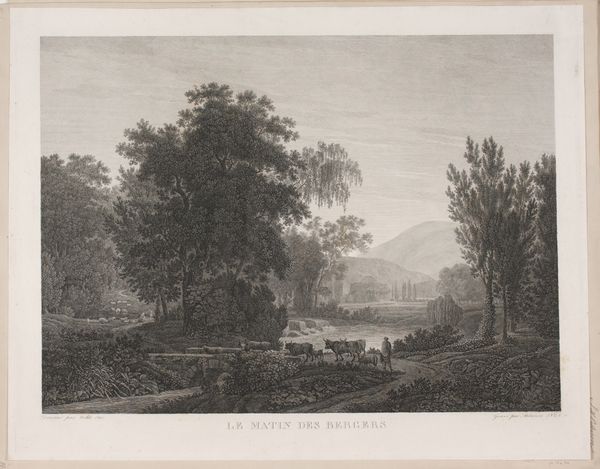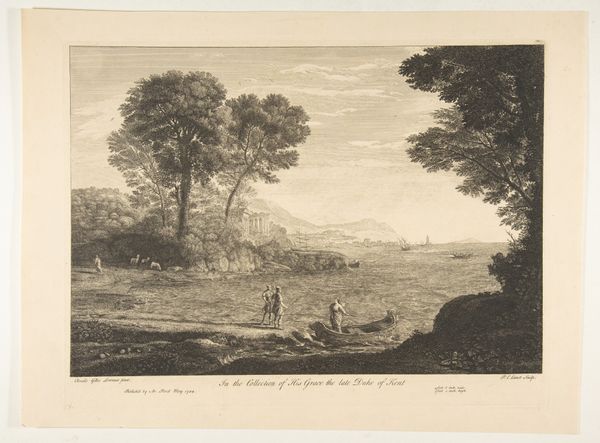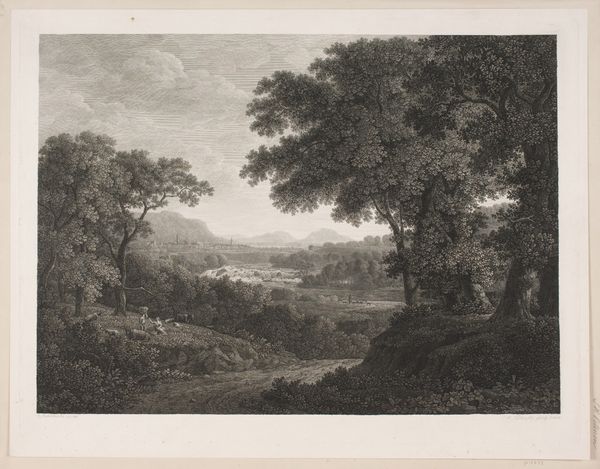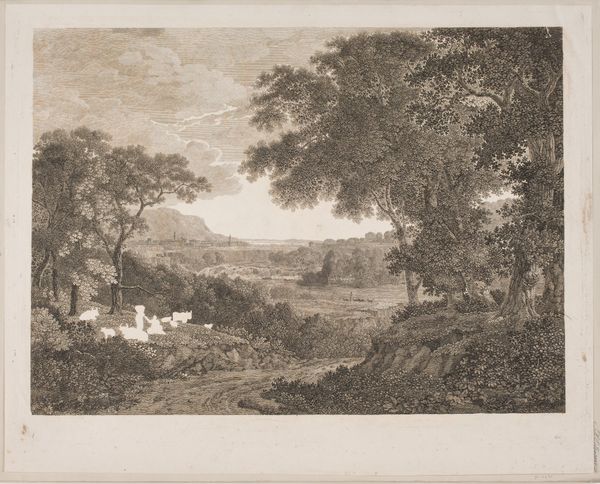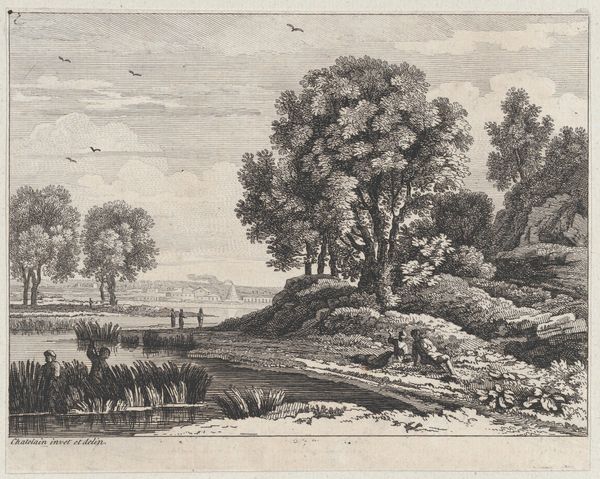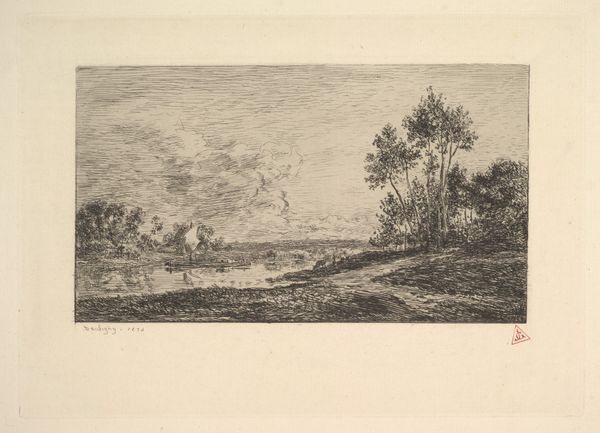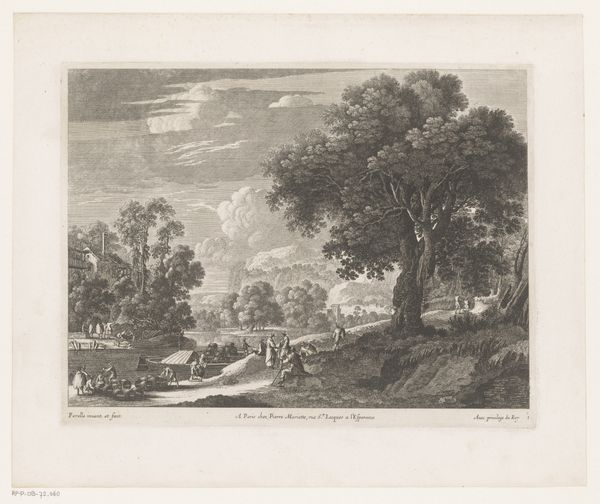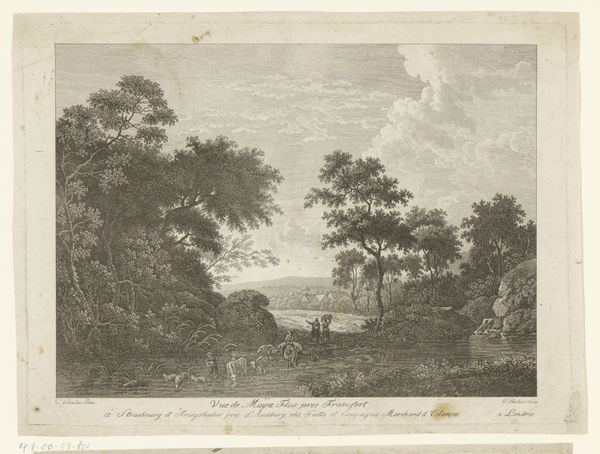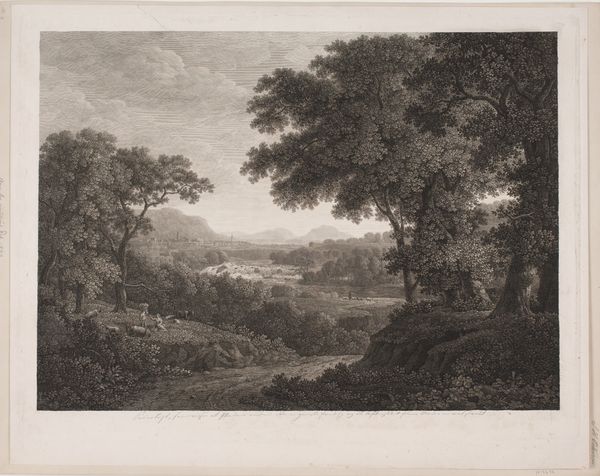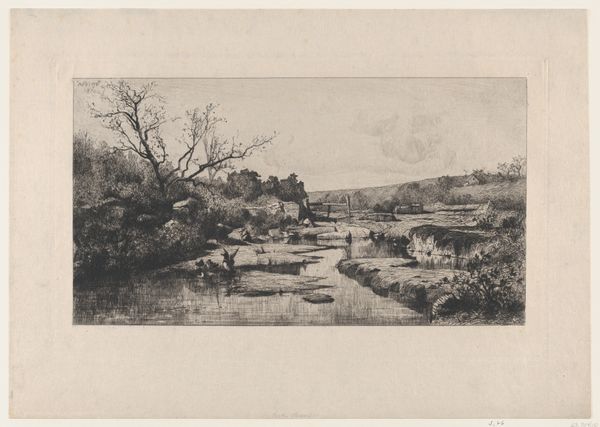
print, engraving
# print
#
landscape
#
romanticism
#
engraving
#
realism
Dimensions: 486 mm (height) x 625 mm (width) (plademaal)
Curator: Before us, we have "Le Matin des Bergers," or "The Morning of the Shepherds," an engraving from 1825 currently held at the SMK in Copenhagen. What are your initial thoughts? Editor: It strikes me as intensely serene. The pale greys, almost monochrome, create a muted atmosphere, like a dream slowly materializing. The scale is intimate, yet the scene opens into a vast distance. You can almost smell the dew and feel the damp earth. Curator: Indeed, the tonal qualities evoke a certain mood. Examining it through a contemporary lens, I can't help but consider how pastoral scenes like this are often romanticized representations of rural life, carefully crafted to erase the harsh realities faced by the working class. Who benefits from these depictions, and whose stories are excluded? Editor: That’s a potent question. It makes me think about the technical skill involved in creating this image. Engraving requires immense labor, transferring a vision onto a metal plate through meticulous carving. This itself is a means of production. Curator: Precisely! And that labor is not disconnected from the subject matter. Consider the gendered aspect here – women, who undoubtedly played essential roles in agricultural life, are notably absent. Their contribution is rendered invisible in favor of a traditionally masculine narrative of shepherding. Editor: We also can't ignore the paper itself. What type was used? Where was it sourced? Every mark on this paper represents labor at multiple levels, from the shepherd depicted to the engraver to the materials involved. I agree that absences say much as what's included, perhaps hinting that these images serve social or even political purposes of that time. Curator: This makes us ponder ideas of idealized rural existence in the face of social changes related to increasing industrialisation in the nineteenth century. How would this particular print allow audiences to embrace notions of folk culture, or to assuage class tensions arising at that historical moment? Editor: So while this seems, at first glance, a restful scene, you're prompting me to think critically about its materiality. And how that contributes to larger social and cultural meaning. A peaceful dawn, perhaps, yet forged from intricate labour and selective representation. Curator: Yes, examining art means acknowledging that artworks operate within wider fields of influence, never existing neutrally. With its attention to material composition, technique, and production conditions, even an apparently simple pastoral picture proves quite complex. Editor: Looking again, I now see not just serenity, but also the countless, considered decisions that have shaped this enduring and captivating image. Thanks to the details of materiality and cultural references, "Le Matin des Bergers" yields exciting interpretations!
Comments
No comments
Be the first to comment and join the conversation on the ultimate creative platform.
